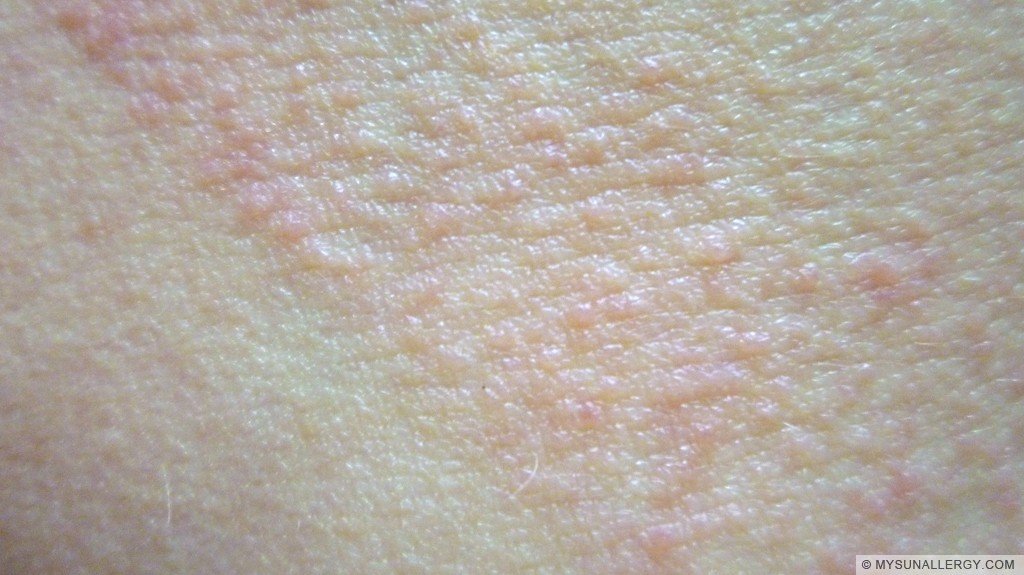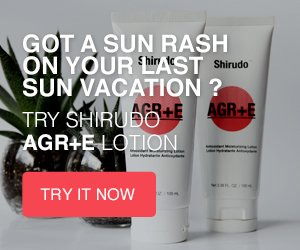We don’t see a lot of medical studies on Polymorphous Light Eruption. Maybe because it’s not a life threatening condition and it is considered mild and easy to avoid by most dermatologists. Here is a review on the few medical studies on Polymorphous Light Eruption (PMLE).
Please note these links require a medscape.com free account – I highly recommend you subscribe to Medscape if you want to read complete clinical studies. You can find below a resume of the studies and conclusions.
Study No 1 – Polymorphous light eruption (PLE) and a new potent antioxidant and UVA-protective formulation as prophylaxis
by Hadshiew IM, Treder-Conrad C, v Bülow R, et al.Photodermatol Photoimmunol Photomed. Aug 2004;20(4):200-4
- A randomized, double-blind, placebo-controlled clinical study who compared the efficacy a topical formulation of alpha-glucosylrutin (AGR), vitamin E and a broad-spectrum versus a sunscreen only formulation. Tested with 30 patients with history of PMLE in a lab with controlled UV exposure. Results of this study are very good. After 4 days, only one patient developed clinical signs of PLE with this new formulation of AGR, vitamin E and sunscreen, 62.1% of the placebo-treated areas and 41.3% of the sunscreen-only treated areas showed mild to moderate signs of PLE. This study reveal that combining antioxidant with UV protection is far more effective to prevent PMLE than sunscreen alone. They recommend it as the go-to preventive treatment.
Study No 2 -Polymorphic light eruption: prophylaxis using a topical combination of antioxidants and UVA protection formulations
by Jeanmougin M, Peyron JL, Thomas P, Beani JC, Guez E, Bachot N.. Ann Dermatol Venereol. May 2006;133(5 Pt 1):425-8.
This study build on the previous one with the same formulation of AGR, vitamin E and a broad spectrum sunscreen. This time it was tested in real summer condition on more than 50 patients with at least 3 PMLE episodes in the past, including the previous year. The formulation was applied every 2 hours after the first exposure and no other treatment was used in combination.
At the end of the summer, no eruption was seen for 35 patients (67%), with minor eruption for 10 patients (19%) and an marked eruption for 7 patients (13%). Pruritus (present in all patients the year before) was not seen in 36 patients (69%), was considered bearable for 36 patients and unbearable for only 3 patients compared to 27 before inclusion. For the dermatologists, efficacy was excellent for 35 patients and good for 7 patients, giving global efficacy of around 80%. It also appears this protection from skin irritation also reduced sunburn by 60% compared with the previous year. This study is really important because it shows that the formulation is effective in real conditions as well.
Study No 3 – Psychologic distress in polymorphous light eruption and its relationship to patients’ beliefs about their condition
by Richards HL, Ling TC, Evangelou G, et al. . J Am Acad Dermatol. Mar 2007;56(3):426-31.
This study shows that 40% of PMLE sufferer with have psychological distress related to the condition.


